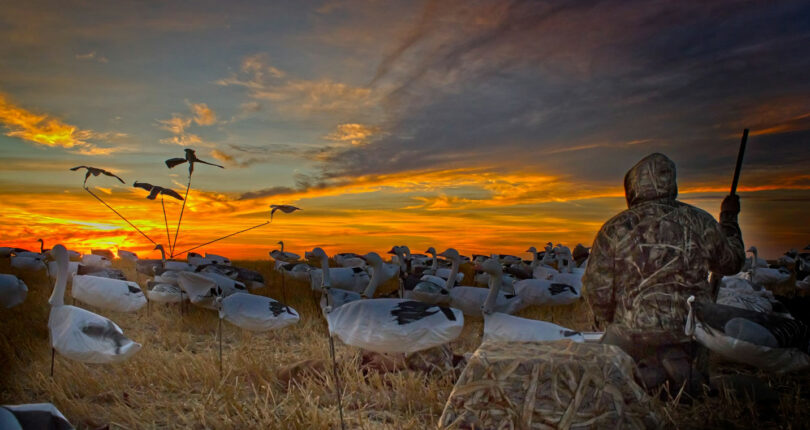The Light Goose Conservation Order, now in its 26th year, draws to a season close in Colorado (east of I-25) April 30. In 1940, there were fewer than 1 million snow geese on the continent, but due to changes in the agricultural landscape in the Central Flyway, their numbers began to soar astronomically, and today, scientific estimates run from 5 million to 8 million.
The population explosion destroyed huge tracts of plant life in waterfowl nesting habitat across the arctic tundra, leading, in turn, to overcrowding, the spread of avian diseases, and even more destruction of critical habitat. Biologists predicted the resulting die-off of shorebirds and waterfowl would be staggering if snow goose populations weren’t brought into balance with the habitat. So, in 1999, Congress enacted the conservation order in an effort to dramatically reduce their numbers. The snow goose season was extended through the spring migration period, and wildlife managers lifted virtually all conventional hunting restrictions, methods of take, and bag limits to facilitate large harvests.
It’s been several years since the boys and I took part in a snow goose hunt, but I remember it as if it happened yesterday. We had just finished putting decoys out, almost a thousand of them, in fact — a mix of full bodies, shells, silhouettes, and Texas Rags. Rag decoys are lightweight fabric wind socks designed to look like snow geese. They flutter and wobble in the slightest breeze, adding realistic lifelike movement to an otherwise static spread. A mechanized flying decoy rig completed the setup.
We were sitting in our layout blinds, sipping coffee and gaping slack-jawed at a spectacular sunrise when we heard them. A wild cacophony of high-pitched barks and yelps rose in the distance and drew closer by the second. Endless layers of long, wavy ribbons appeared on the fiery horizon, and within minutes the air around us was filled with thousands of raucous, squawking snow geese. We were smack in the middle of the spring snow goose migration — a wildlife event of such mammoth proportion it has to be seen to believe. The noise was thunderous.
Jim Gammonly, an avian researcher for what was then called the Colorado Division of Wildlife, said, “Hunting remains the most effective tool we have for controlling wildlife populations, and the single best hope for averting this monumental ecological and wildlife calamity lies with American sportsmen. Hunting and harvesting excess animal populations is not only defensible and justified, it’s a biological necessity.”
Dennis Smith is a freelance outdoors writer and photographer whose work appears nationally. He lives in Loveland.

